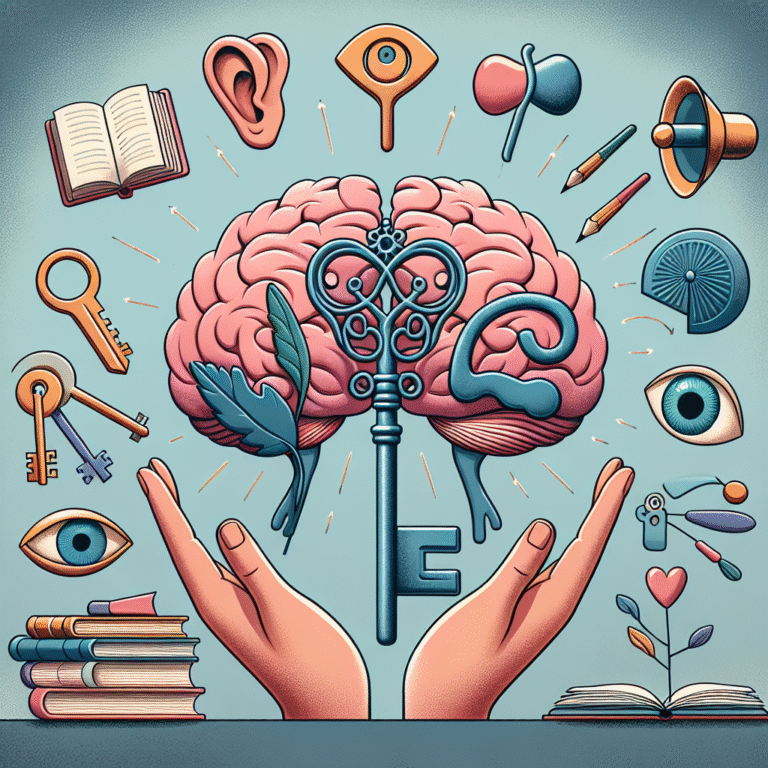
Navigating Anxiety: Essential Evidence-Based Behavioral Strategies for Everyday Life
Introduction
In today’s fast-paced world, anxiety has become a common experience for many. Whether you’re feeling overwhelmed at work, anxious about personal relationships, or struggling with feelings of uncertainty, the weight of anxiety can feel unbearable. Understanding how to manage and navigate these feelings is crucial not only for mental well-being but also for overall quality of life. In this ultimate guide, Navigating Anxiety: Evidence-Based Behavioral Strategies for Everyday Life, we will explore effective strategies grounded in research that can help you regain control over your life and empower you to thrive despite challenges.
Understanding Anxiety
What Is Anxiety?
Anxiety is a natural response to perceived threats or stressors but can sometimes become overwhelming and chronic. It manifests in various ways, including excessive worry, anxiety attacks, and physical symptoms like rapid heartbeat or sweating. Recognizing the signs of anxiety is the first step in navigating anxiety effectively.
The Impact of Anxiety on Daily Life
The effects of anxiety can ripple through all areas of life, affecting productivity, relationships, and self-esteem. Individuals may find it difficult to focus at work, engage with friends and family, or pursue hobbies they once enjoyed. This article aims to provide you with a range of actionable strategies to manage these feelings more effectively.
Evidence-Based Behavioral Strategies
Mindfulness and Meditation
One of the most effective ways to navigate anxiety is through mindfulness practices. Mindfulness encourages living in the present moment and can significantly reduce anxious thoughts.
Case Study: Sarah’s Journey
Background: Sarah, a 29-year-old marketing executive, experienced crippling anxiety, particularly when faced with deadlines.
Strategy Implemented: She began a daily mindfulness meditation practice, starting with just five minutes each morning.
Outcome: After six weeks, Sarah reported feeling calmer and more focused at work, allowing her to meet deadlines without panic attacks.
Analysis: Sarah’s case illustrates how mindfulness can rewire our response to stress. Mindfulness techniques can decrease the amygdala’s response, which is responsible for triggering anxiety.
Cognitive Behavioral Therapy (CBT)
CBT has proven effective in addressing anxiety by helping individuals challenge and change negative thought patterns.
Case Study: Mike’s Transformation
Background: Mike, 35, struggled with social anxiety that prevented him from attending social gatherings.
Strategy Implemented: Through CBT, Mike learned to identify distortions in his thinking and practiced exposure in controlled environments.
Outcome: Over a few months, he became more comfortable in social situations, eventually enjoying gatherings rather than avoiding them.
Analysis: Mike’s experience underscores the power of reframing thoughts and facing fears gradually, a hallmark of CBT techniques that can be employed by anyone navigating anxiety.
Exposure Therapy
Exposure therapy is a specific type of CBT that gradually exposes individuals to the sources of their anxiety to diminish fear over time.
Case Study: Jenna’s Progress
Background: Jenna, a 40-year-old with a fear of flying, wanted to visit family in a different state.
Strategy Implemented: Jenna underwent a structured exposure therapy program, starting with virtual simulations of flying experiences before progressing to short flights.
Outcome: By the time she booked her ticket, Jenna felt equipped to handling her anxiety, leading to successful travel and enjoyable visits.
Analysis: Jenna’s case exemplifies how systematic exposure can lessen phobias and anxiety over time, making it easier to manage situations that previously incited fear.
Breathing Techniques
Simple yet powerful, breathing exercises can help to calm the nervous system and significantly reduce anxiety symptoms.
Quick Breathing Exercise: The 4-7-8 Method
- Inhale through your nose for 4 seconds.
- Hold your breath for 7 seconds.
- Exhale slowly through your mouth for 8 seconds.
This technique helps return your body to a state of calm.
Journaling
Writing down thoughts and feelings can clarify anxiety-provoking situations and reduce their power.
Case Study: David’s Reflection
Background: David faced chronic anxiety due to various life stressors and often felt overwhelmed.
Strategy Implemented: He started journaling daily, reflecting on his feelings and identifying triggers.
Outcome: Over months, David was able to manage his anxiety better by recognizing patterns and developing coping strategies.
Analysis: Journaling provides an outlet for expressing emotions and can illuminate threads of thought that exacerbate anxiety, allowing for more proactive management.
Lifestyle Changes
Exercise
Regular physical activity is essential in reducing anxiety levels. Exercise releases endorphins that enhance mood and help with stress management.
Nutrition
A balanced diet impacts mental health significantly. Nutrient-rich foods can improve mood stability, while excessive caffeine and sugar can exacerbate anxiety symptoms.
Sleep Hygiene
Quality sleep plays a critical role in managing anxiety. Establishing a nighttime routine can significantly enhance sleep quality and decrease anxiety levels.
Building a Support System
The Importance of Community
Connecting with friends, family, or support groups can provide reassurance and understanding, essential for navigating anxiety.
Case Study: Emily’s Support Network
Background: Emily, 28, struggled alone with her anxiety after moving to a new city.
Strategy Implemented: She joined a local support group for individuals dealing with anxiety.
Outcome: The support of others helped Emily feel less isolated and created lasting friendships that provided essential emotional support.
Analysis: Emily’s experience illustrates the importance of community and belonging in reducing feelings of anxiety and enhancing coping mechanisms.
Conclusion
Navigating anxiety can feel daunting, especially when it becomes a part of daily life. However, with the right strategies and support, it is possible to take back control. The evidence-based behavioral strategies discussed—mindfulness, CBT, breathing techniques, and lifestyle changes—are tools you can incorporate into your routine to improve your mental health. Remember, no one is alone in this journey; seeking help, whether from professionals or support systems, can transform your experience.
By implementing these strategies and nurturing a positive mindset, you can master the art of navigating anxiety and empower yourself to enjoy life to its fullest.
FAQs
What are the first signs of anxiety I should look out for?
- Common signs include excessive worrying, restlessness, difficulty concentrating, and physical symptoms like increased heart rate or sweating.
Can mindfulness really help with anxiety?
- Yes, research shows that mindfulness can significantly reduce anxiety by fostering a focus on the present and improving emotional regulation.
How long does it typically take to see improvements from cognitive behavioral therapy?
- Many individuals notice improvements within a few sessions; however, enduring change often requires consistent practice over weeks or even months.
What if I can’t afford therapy?
- Many community centers and universities offer free or reduced-cost therapeutic services. Additionally, self-help books, online courses, and support groups can provide valuable resources.
- Are there any medications that can help with anxiety?
- Yes, certain medications may be prescribed by healthcare professionals for anxiety treatment, but it’s essential to consult with a doctor to explore options tailored to your needs.
In this comprehensive guide on Navigating Anxiety: Evidence-Based Behavioral Strategies for Everyday Life, we’ve shared practical approaches derived from real-world experiences and research. May you find the strength to confront anxiety head-on and lead a fulfilling life!















